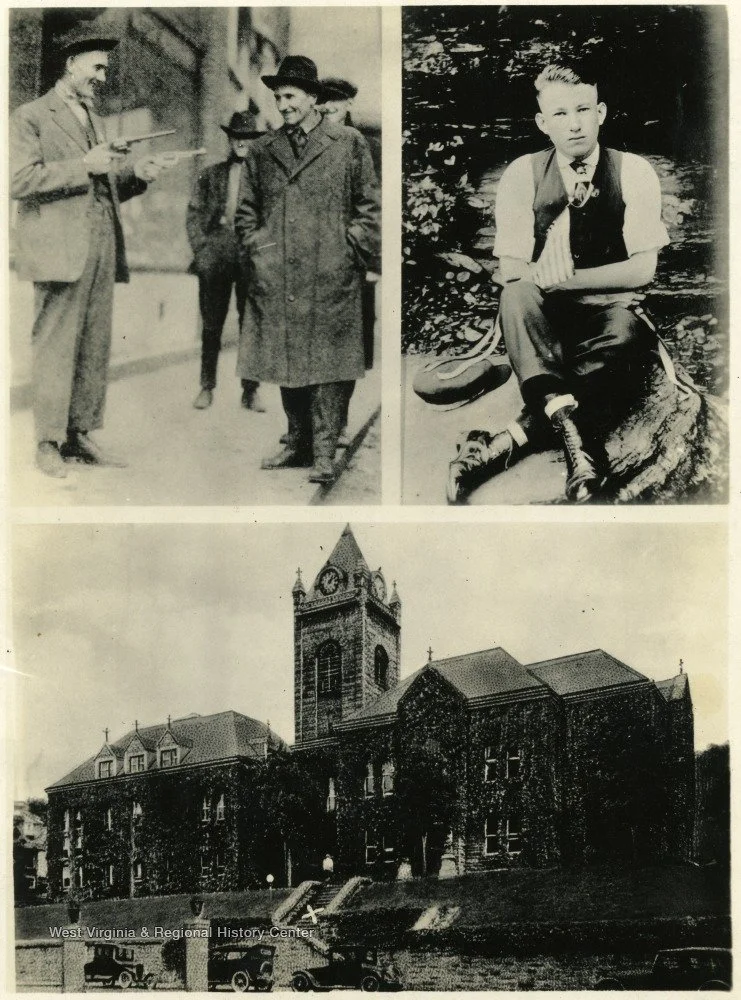"Battle of Matewan: A Fight for Workers' Rights"
On January 28, 1921, a pivotal moment in labor history unfolded as the trial of Sid Hatfield and twenty-two other defendants began in Williamson. Represented by UMWA attorney Harold Houston, the defendants faced charges related to the shootout often referred to as “The Matewan Massacre.” This trial marked a turning point in the struggle for workers' rights during a tumultuous period in Matewan, West Virginia.
Union Relief Day for Strikers at Matewan, W. Va.
Men standing in front of Matewan Hardware and Furniture Company Inc. building.
The Battle of Matewan:
Sid Hatfield, Chief of Police in Matewan, found himself at the center of a violent clash between coal miners and Baldwin-Felts agents. The Stone Mountain Coal Company aimed to crush union activity, leading to the eviction of union miners. Hatfield, a staunch supporter of workers' rights, confronted the agents, triggering a shootout. The confrontation left 7 agents, the mayor, and two townspeople dead.
Baldwin-Felts Agents Killed in Battle of Matewan
'Top row, left to right: C.T. Higgins, Albert Felts, and Lee Felts; Bottom Row, left to right: C.B. Cunningham, A.J. Booher, E.O. Powell, and J.W. Ferguson.
Jessie Testerman Hatfield & Matewan Mayor Cabell Testerman
The Trial:
As the trial commenced, Williamson became a tense battleground with fifty state police and forty mine guards patrolling the streets. The defendants, represented by Harold Houston, faced charges of murder in connection with the Battle of Matewan. The prosecution sought to prove premeditated murder, relying on the testimony of paid spies. According to historian James Green, author of The Devil Is Here In These Hills, “the ACLU had advised defense attorneys to turn the trial into a prosecution of the coal operators by introducing in evidence the entire record of their conspiracy to deny the citizens of West Virginia of their legal rights.” This strategy turned the tables by exposing the coal operators' conspiracy to deny legal rights. The defense successfully discredited the paid agents, leading to the acquittal of Hatfield and his co-defendants.
West Virginia Mounted State Police in Logan County
The Aftermath:
Upon their return to Matewan, Hatfield and his deputies were celebrated as heroes. However, Hatfield's advocacy for workers' rights made him a target, and later that year he and Ed Chambers were tragically gunned down in Welch on the courthouse steps. These murders and the rollback of constitutional rights sparked miners to rally in Charleston to demand the end of mine guard rule.. West Virginia’s Governor Morgan refused to hear their demands and this set into motion the beginnings of the miners’ march and The Battle of Blair Mountain.
Ed Chambers is on the right. "Two Gun" Sid Hatfield on the left. The bottom is the courthouse at Welch.
The x marks the spot where where Chambers and Hatfield were killed. 1921 strike.
The Battle of Matewan and its aftermath stand as a poignant chapter in the history of labor rights, showcasing the fierce resistance of workers against oppressive forces. Sid Hatfield's legacy lives on as a symbol of the ongoing fight for justice and equality in the workplace. On this day, let us remember and honor those who stood up for workers' rights in Matewan, West Virginia, and recognize the enduring importance of their struggle.







